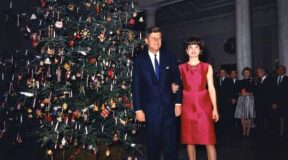The look of Netflix’s new animated feature “Vivo” is informed by its vibrant Cuban music, a fusion of reggae and mambo. Production designer Carlos Zaragoza kept those lively sounds in mind as he created the visuals.
Set across Havana, Key West, the Everglades and Miami, the film needed a unique color palette and personality for each locale. Location scouts and interviews with locals helped Zaragoza in his world-building. Meanwhile, Oscar-winning cinematographer Roger Deakins brought his expertise as visual consultant, advising on lighting and helping to give the film a kaleidoscopic, photoreal look.
Premiering Aug. 6, “Vivo” follows a one-of-a-kind kinkajou (a mammal native to the tropical rainforest — voiced by Lin-Manuel Miranda) who spends his days in Havana performing in the town square alongside his owner, Andrés (Juan de Marcos of “Buena Vista Social Club”). Their love of music takes Vivo on a journey as he sets out to deliver a message from Andrés: a love song to the famous Marta Sandoval (Gloria Estefan) in time for her farewell concert in Miami.
For Key West, art director Wendell Dalit emphasized blue tones to tell the story of Vivo’s first time leaving Havana. “He’s a fish out of water here,” Dalit says. For Miami, Zarazoga turned to vintage travel posters from the ’60s and ’70s for inspiration.
The first time audiences see Miami is in the musical sequence for “Mambo Cabana,” in which Andrés fancies himself singing the song with Marta. Zaragoza points out that this is Andrés’ vision of the city. “It’s his imagination and inner feelings of a city he’s never been to. He’s imagining everything out of looking at those posters, the illustrations, the record covers that he’s been looking at for decades,” Zaragoza says. “It all felt lyrical and at the same time believable.”
As Vivo’s journey continues, he reaches the Everglades. “We wanted the Everglades to be lush and inviting at first,” Dalit says of the lily pads, cattails and sawgrass that the character encounters.
Zaragoza was determined to experience the national park firsthand before designing that world. Elaine Fiore, an environmental educator and park tour guide, was instrumental in helping him. “Their research allowed them to capture the beauty of the Everglades and include a lot of important creatures in their story,” she says. Some of the Everglades scenes were inspired by a nearby national preserve, the Big Cypress Swamp.
Finally, Vivo gets to Miami. “We were pushing the graphic quality in the architecture and our shapes here,” Dalit explains. “This is the final destination of our character’s journey. It’s the Emerald City of our movie.”
optional screen reader
Read More About:
Source: Read Full Article




